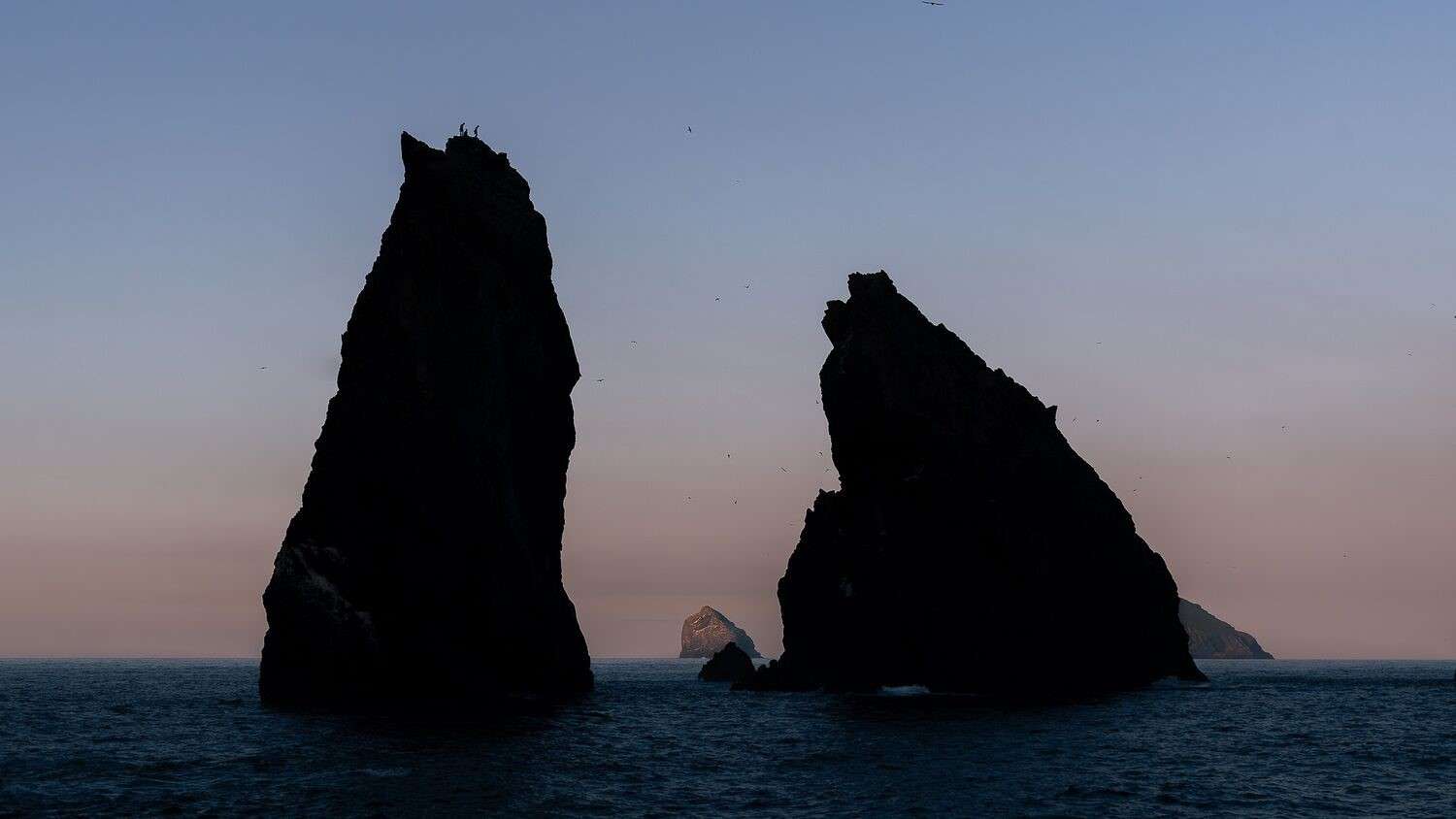A team of climbers has achieved the first ascent of a famous St Kilda sea stack in over 130 years, working with the National Trust for Scotland (NTS) to plan the ascent safely and sustainably. The sea stack is known as ‘The Thumb’, or Stac Biorach, and has caught the imagination of explorers since 1890, although the St Kildans climbed it for centuries before that. Leading the climb was Edinburgh adventurer and climber Robbie Phillips, who worked closely with the NTS to plan the ascent, ensuring they did not disturb the archipelago’s precious seabird colonies or impact the landscape.
Climbing in the fingerprints of the St Kildans
The vertiginous climb up The Thumb was first documented by Martin Martin in 1698 in his book A Late Voyage to St Kilda. He vividly describes the terrifying feat young men would undertake to climb the rock pillar to catch birds and their eggs, without the security of any modern safety equipment. The 70m stack towers above the Atlantic Ocean; young men would scale the rock face with only a thin rope made of horsehair to pull them back to the boat should they fall.
Speaking about his trip to St Kilda, Robbie Phillips said, “Climbing The Thumb was like walking in the footsteps, or climbing in the fingerprints, of the St Kildans. It’s a testament to their bravery and mental fortitude; to climb onto that sea stack 70m above the raging Atlantic without even shoes is wild to imagine. The St Kildans didn’t just survive out here, they thrived with the skills they honed and the traditions they upheld.”
A dual-status UNESCO World Heritage Site
The location of the infamous climb remained a mystery until 1890 when Richard Manliffe Barrington completed it. With no resident St Kildans remaining after the island’s evacuation in 1930, the legend of The Thumb threatened to disappear into history, until this recent ascent brought it back to prominence. Robbie added, “To have such a critical piece of climbing history in Scotland is hugely special to myself as a Scottish climber. This is a unique glimpse into the past that connects us in a meaningful way. That’s why climbing is special, you can experience things exactly as the St Kildans did, albeit hundreds of years apart.”
St Kilda is a dual-status UNESCO World Heritage Site, one of only 39 mixed-status sites in the world, and it boasts an incredible amount of natural and cultural significance. The archipelago came into the National Trust for Scotland’s care in 1957, and since that time they have worked hard to conserve and sustain the islands’ heritage.
Susan Bain, the National Trust for Scotland’s Property Manager for St Kilda, said: “As a professional climber, Robbie had the skills and the back-up to attempt this climb safely, but it’s important to emphasise that the landscape of St Kilda can be very challenging and everyone should be very mindful of its dangers as well as its beauty. It is humbling to think about the St Kildans climbing this stack without modern equipment and communications. St Kilda has some of Scotland’s – or the world’s – most breathtaking scenery and wildlife. These, together with St Kilda’s stories, draw an increasing number of visitors. While we are delighted to share this natural and cultural heritage, we also have to be careful to make sure that visits are sustainably managed. It’s important that visitors don’t inadvertently harm the nature, beauty and heritage they have come to enjoy.”
Main photo: Summiting The Thumb in the dark. Photo: Ryan Balharry, via the National Trust for Scotland.

